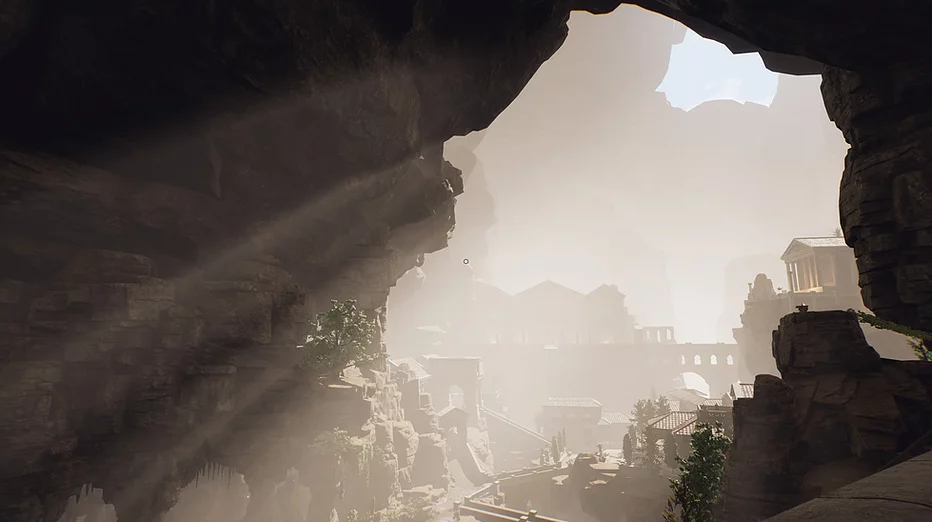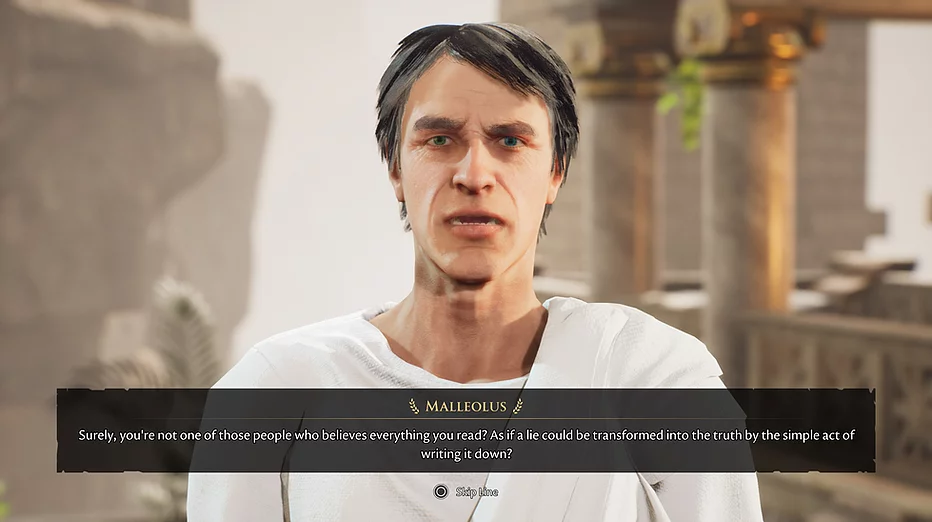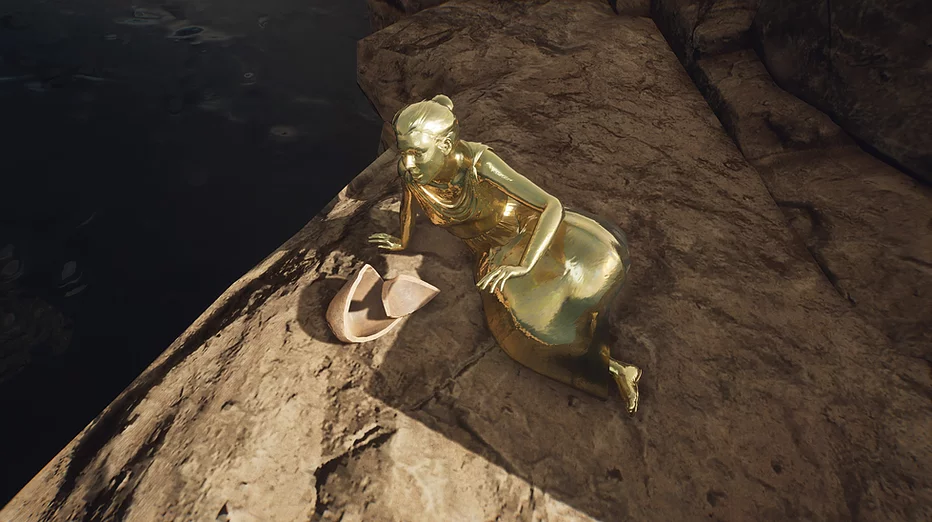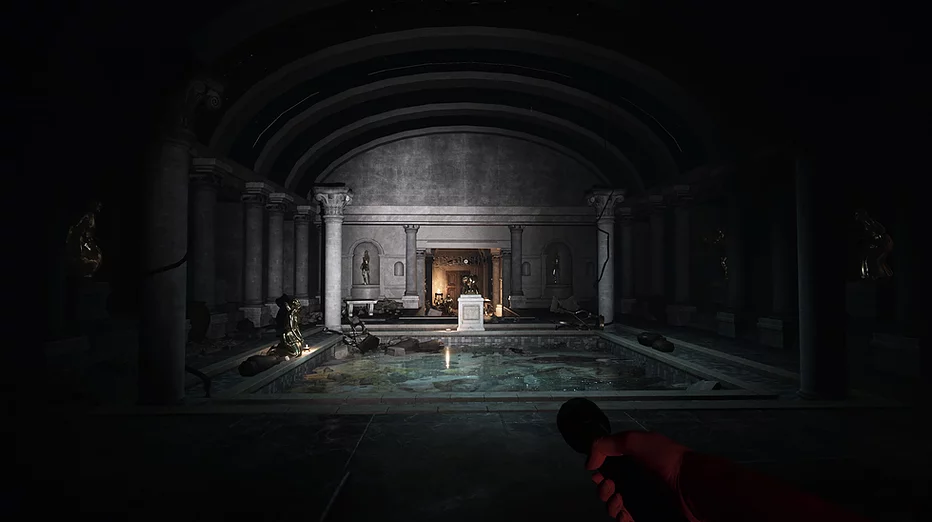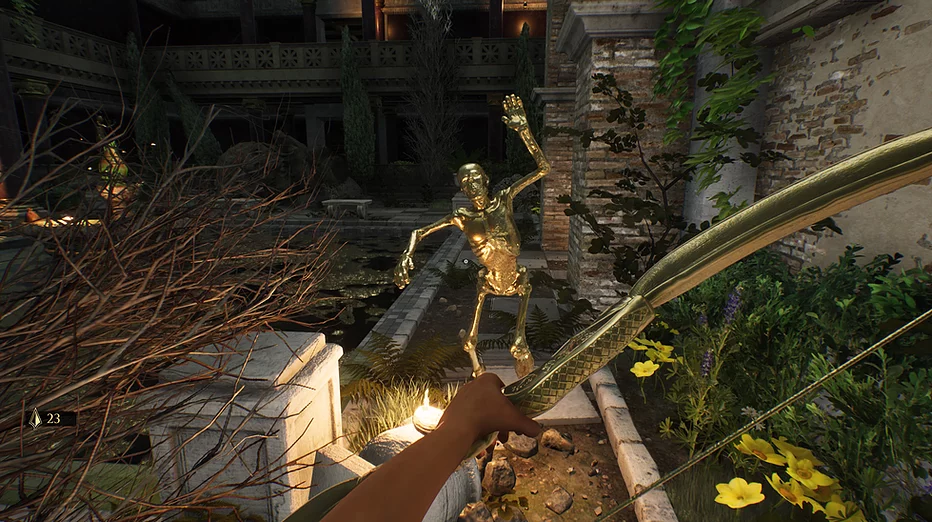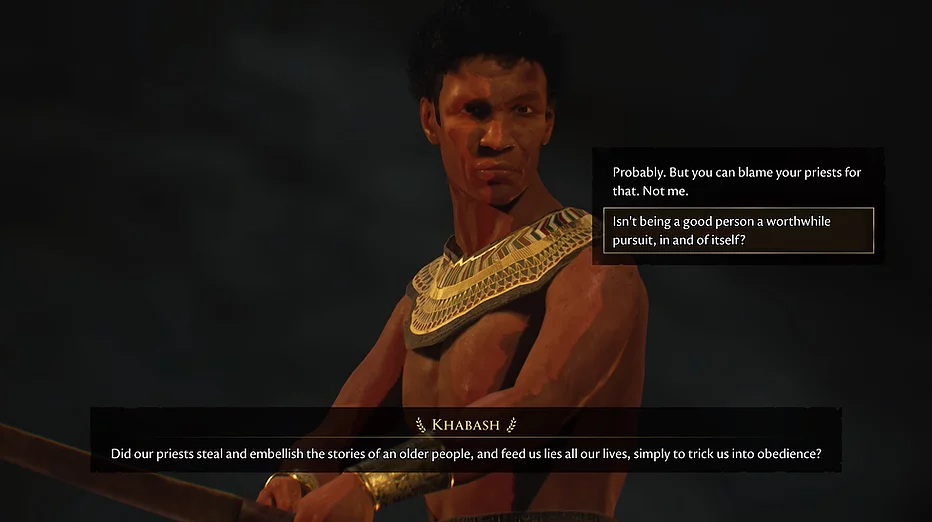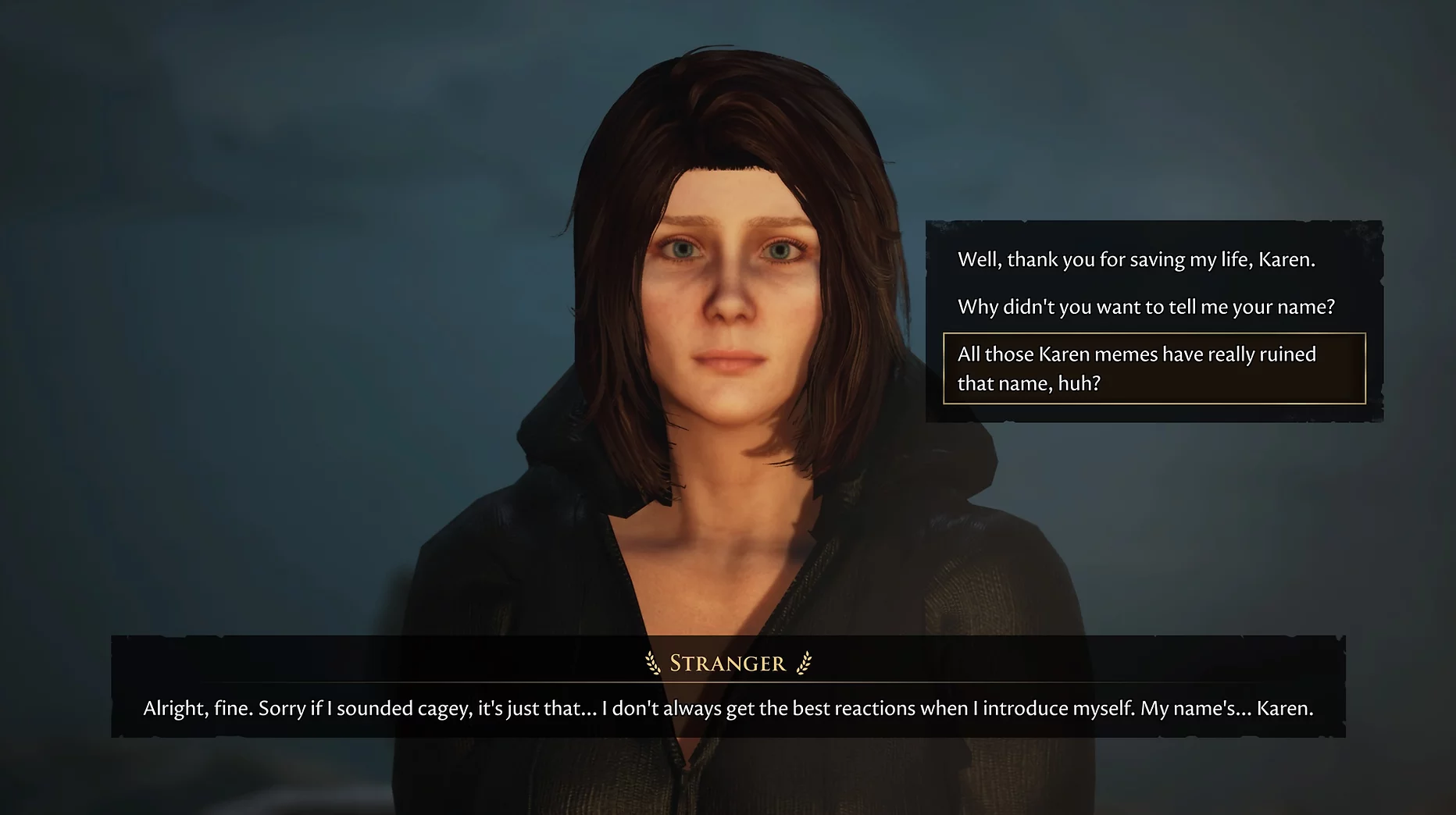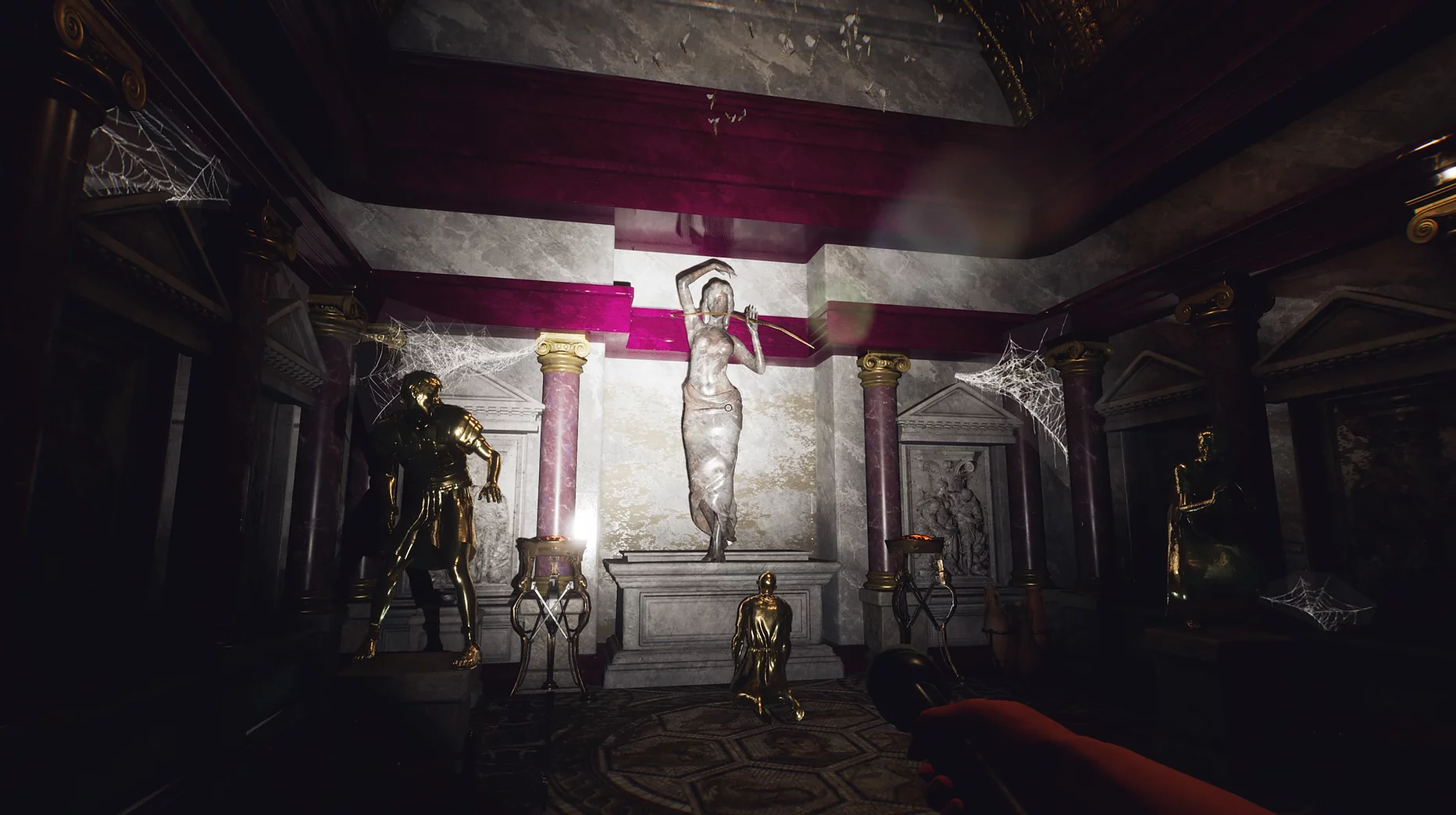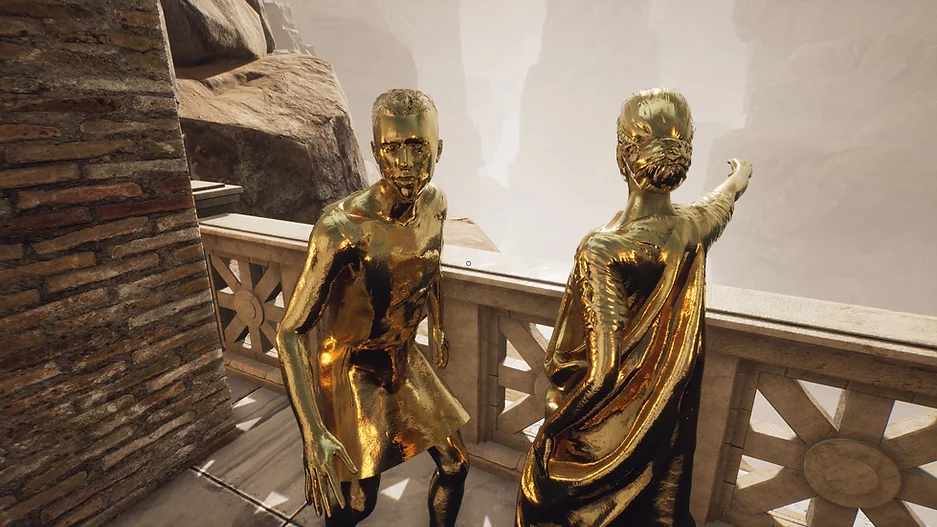
The Forgotten City
Made by: Modern Storyteller
Publisher: Dear Villagers
Platforms: PS4/5, Switch, PC, Xbox One/X/S
Release date: 28/07/2021
Review date:
Emoji summary: 😰🔮💀
Review by: GDLP
Spoilers: I spoil the game’s canon ending
I am realising more and more that it is horror that makes me feel most involved when I play a video game. Involved, engaged, absorbed. These words might be too bland when what I mean is something more acute, something physical; I’m thinking of horror like a black hole for complete soul attention. Horror like a skull clamp, eyes wide open. I play games now excited to be scared. And I don’t fully understand what it means to enjoy this. A kind of consensual fear? Exposure therapy to madness, bravery, and control. I might just be spinning my wheels while I wait for the world to end by leaning into the true atmosphere of the darkest timeline. It can be a relief and, somehow, a neutraliser: horror like a quick eclipse to stop my eyes from burning when I can’t stop myself from looking at the sun. Sometimes, and it seems often now, darkness in a video game experience is what I want most.
Usually, I pick a game up knowing what genre I am going to be getting myself into, and if it is horror I start to feel the dread that is so much a part of the experience. But I played a game this week I knew nothing about, The Forgotten City. It was a Skyrim mod so popular it was developed into a game of its own. And it is a braid of different styles — of mystery, tragedy, comedy, and fantasy. I couldn’t quite find my bearings on its genre. That was until I took the story home to its multiple endings and realised there was a common thread of horror running through all its other moods. Horror crept up on me in a sly delivery, waiting until I had learnt enough of the mystery to follow the trail of clues right into its arms. I had never played a horror game that only revealed itself as such half way through the story. And I found it thrilling precisely because I hadn’t known what was coming my way.
Clues I didn’t realise were clues. The story of The Forgotten City begins when we wash up confused on the banks of the River Tiber in Italy. A woman called Karen is stood there wearing a black hoodie and she quickly explains that somebody else has just washed up here a moment ago. They went into that cave over there but they never came back out — could we go in and find them? We enter the cave and also a portal that sends us 2000 years back in time to an ancient Roman town. The place we end up in is a trap.
A grand architectural network of archways, bridges and temples, The Forgotten City is Escher-lite on light mode. It is glaringly bright, even at the bottom of the deep valley where it is situated. An idyllic dead-end with hardly anyone around to spoil the scenery, the few people we meet don’t quite remember how they got here but they all agree there is no way to get out.
And that’s not the only problem. Lining the streets of this place are incredible, reflective gold statues. They can be found running, screaming and cowering as if they were made to depict some kind of apocalyptic performance. They aren’t on plinths though and they are not art but people in place on the streets, in the lake, and in houses, frozen, gold and dramatic. Speaking to the Magistrate who rules over this strange town, we learn that everyone abides by The Golden Rule here. If even one person sins, everybody will suddenly be turned to gold. The people see the statues as proof that the civilisation before them failed, and so they live in a cautious harmony with one another lest they fail too. It is a tense kind of harmony though, a spiritual group project. It is our job as the player to figure out what is going on, to see if this rule is even real, and most importantly to find a way out of The Forgotten City and back to the present.
Now, I thought it was my job to simply speak my way to the end of the game in a calm and ordered manner. I thought I would stroll through this polite, philosophical puzzle while I got to admire its glorious setting. Golden statues gilding the scene, stillness, nature, perfect dawn light — I was in a lucid dream I didn’t want to wake up from. I was enjoying the place and its loose, invisible knot of level design that held back plenty of secrecy for me to discover. I was moving through its maze at a slow morning pace, speaking to the people I found and enjoying them too. Stories, quips, writing that acknowledged my contemporaneity as the player. We joke with Karen on the riverbank that ‘All those Karen memes have really ruined that name, huh?’ When we speak to the soldier Rufius about his thoughts on The Golden Rule, he says ‘I’ll tell you this much: I hate the fact that my survival depends on the common sense of other people.’ One of the text options in response is ‘I know the feeling. I’ve lived through a pandemic.’ Yeah, I really was just going about my business, finding the whole thing so pleasant — and so I was caught off guard when the horror arrived. I love that I was so caught off guard.
This light sheen over the game’s entire design is simply a cover for its real genre. The art, writing, action, narrative structure and pacing are all complicit in the bait and switch. So many clues I didn’t realise were clues! So many warnings I didn’t take seriously! Like, remember Karen on the riverbank wearing her black hoodie? She is actually Kharon, the cloaked spirit that ferries newly deceased souls to the underworld. That, er, also means that we are dead. Oh and The Golden Rule, the thing I thought might be a fable made up by the Magistrate to keep his town in order? Totally real. I stole something from the market and watched the rule come true: the game shifted to black and white, and ghostly archers started firing arrows that turned everybody into gold. The earth rumbled, a voice boomed down from the sky. (And honestly, I stole without even thinking because stealing seems to be such a casual activity in so many of the games I play that I forgot there might be consequences. When that turned out to be wrong, it only added to my fear).
Those beautiful gold statues all over the place that really make this game so visually appealing? Yeah, they’re not exactly what they seem either. In a quest to track down a citizen that has gone missing (even in a place where nobody can leave), we find a midwife in a locked palace surrounded by blood and gold and dirtied medical instruments. We learn through her that the statues are in fact conscious. She’d heard them whispering, gone mad with the confusion, and attempted to break inside the statues only to find still-living people trapped inside molten gold. She’d accidentally killed everyone she had tried to break out through these difficult experiments. Going back into a sunny city full of the golden statues after learning that was a chilling experience that broke the pleasant spell I had been under before. Above ground, the statues are gold models fixed in place forever, imprisoned. But down in secret caves, they are emaciated and can suddenly run at speed like zombies. Above and below, so much fear.
When the story of The Forgotten City finally came together, I felt torn. I felt some much-deserved relief for getting through the horror but there was almost some disappointment the tension was over, like it was ending too soon. I will explain the reason for The Golden Rule and all of its mysteries, but I also sense that explaining why will puncture the horror factor of this review as well — that anything after this sentence is a slope back down to reality after the good, dark fiction. I should have never finished the game but I had to! I had to know what was going on.
In the end, I came face to face with the god of the underworld. He introduced himself through the many names he has been called over time: ‘Nergal to the Sumerians, Osiris to the Egyptians, Hades to the Greeks, and Pluto to the Romans.’ To his left, stood Kharon who I’d already met in another form. To his right, his beloved: ‘Ereshkigal to the Sumerians, Isis to the Egyptians, Persephone to the Greeks, and Proserpina to the Romans.’ As he is the all-powerful god of the underworld, she is the 'goddess of springtime, the cycle of life and renewal.’
The Forgotten City is then revealed to be a dramatic experiment of the gods. Pluto explains that originally the gods came down from Elysium and showed themselves to the people of Sumer to help guide their morality and survival. But soon, the world grew to be full of barbarians and the gods gave up on their people. Proserpina, however, would not leave. She sacrificed her immortality to stay as a human on earth in order to continue caring for everybody. Or she tried. Pluto, in love with her, would not allow it. He placed Proserpina in a state of suspended animation to protect her from human mortality. He also begged her father Jupiter to let her return to Elysium where he hoped to find a way to restore Proserpina to her goddess self. Jupiter deemed humans unworthy of ascension to Elysium and said there would be no exceptions, not even for his own daughter. And yet, he placed a bet. He said ‘if even one human city could prove itself capable of living without sin for a single year, then Proserpina and all of humanity would be permitted’ to join the gods in Elysium. The Forgotten City is where that bet plays out. The Golden Rule is Pluto wiping the slate clean when another group fails to set Proserpina, and the rest of humanity, free.
I think the game’s canon ending, one of only four, is an incredible feat on the part of the writers. Navigating intense conversations is the game’s core mechanic and as such, the writing has to stand up, fit in, be strong and intricate and clear, and I’m so pleased to say it does it all. I would play this again, I would play a sequel, a prequel, anything this team put together.
I realised through playing The Forgotten City how much I associate horror with ghosts and monsters and a kind of heart-racing fear, but never with the gods. Even though mythology has been defanged by so much of our current media, and some other games in fact, its characters and their stories claw at something truly dramatic inside all of us. Tales of good versus evil, love versus hate. Power, weakness, loyalty, betrayal. Inhuman battles, bets, and curses. The Forgotten City touches on all of these elements and convinced me that mythology is the perfect well to inspire the oppressive genre of horror. In games, these interpretations can provide serious opportunities for players to conquer challenges — to even defeat or outwit the gods. And the concept of gods is scary in a way I cannot put into words. It might be because of their scale, ability, omniscience, or maybe it’s just because existentialism is more terrifying than anything else in the world. I am scared of them and I am so excited to be scared.
If you’re here at the end of the text, please comment a 💀 emoji on our Instagram or share the text with a 💀 emoji on Twitter
